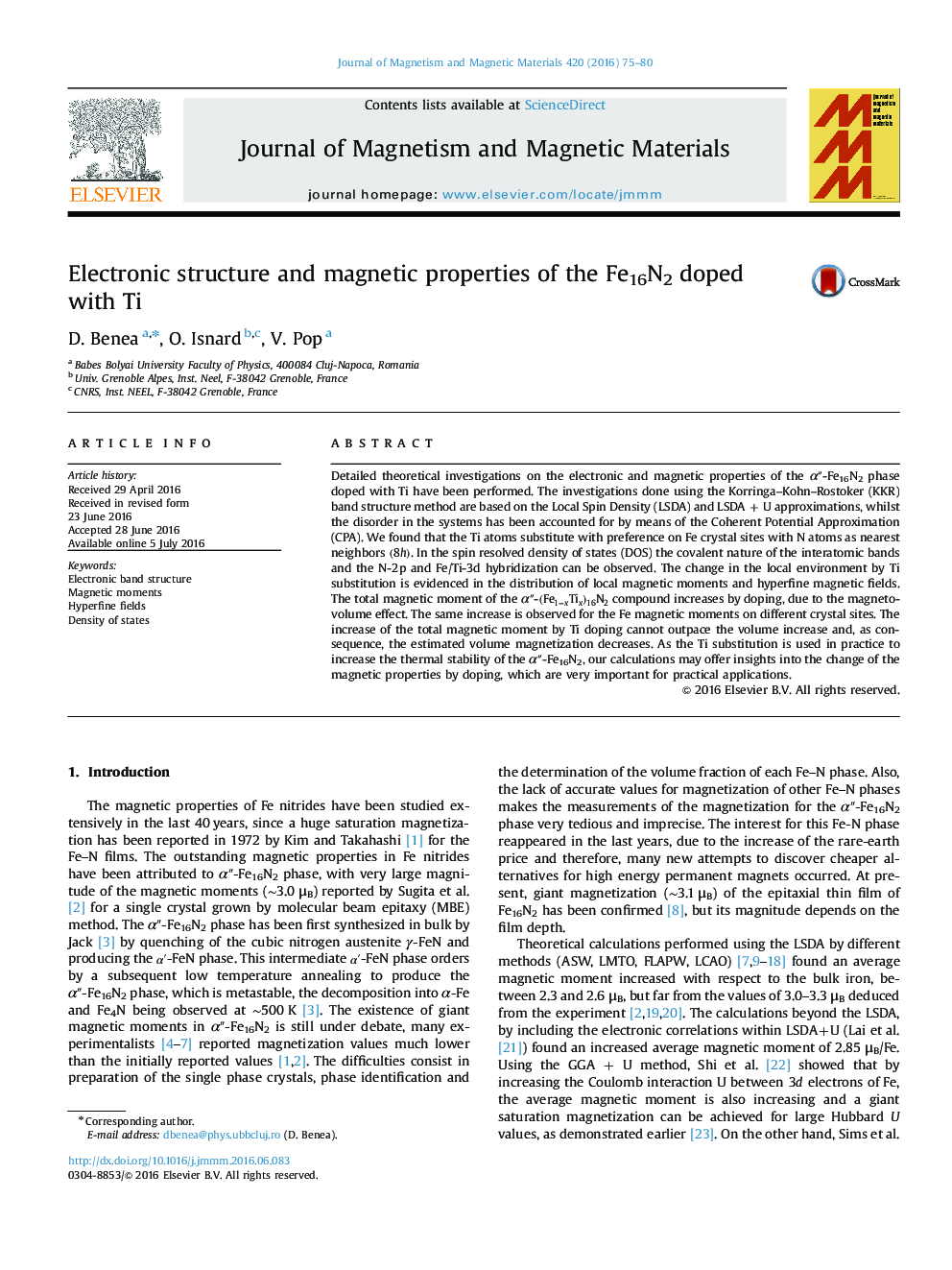| Article ID | Journal | Published Year | Pages | File Type |
|---|---|---|---|---|
| 1797701 | Journal of Magnetism and Magnetic Materials | 2016 | 6 Pages |
•Ti atoms substitute with preference the Fe sites with N atoms as nearest neighbors.•The average magnetic moment of Fe increases by Ti doping.•The estimation shows that the Ti doping decreases the volume magnetization.
Detailed theoretical investigations on the electronic and magnetic properties of the α″-Fe16N2 phase doped with Ti have been performed. The investigations done using the Korringa–Kohn–Rostoker (KKR) band structure method are based on the Local Spin Density (LSDA) and LSDA + U approximations, whilst the disorder in the systems has been accounted for by means of the Coherent Potential Approximation (CPA). We found that the Ti atoms substitute with preference on Fe crystal sites with N atoms as nearest neighbors (8h)(8h). In the spin resolved density of states (DOS) the covalent nature of the interatomic bands and the N-2p and Fe/Ti-3d hybridization can be observed. The change in the local environment by Ti substitution is evidenced in the distribution of local magnetic moments and hyperfine magnetic fields. The total magnetic moment of the α ″-(Fe1−xTix)16N2(Fe1−xTix)16N2 compound increases by doping, due to the magneto-volume effect. The same increase is observed for the Fe magnetic moments on different crystal sites. The increase of the total magnetic moment by Ti doping cannot outpace the volume increase and, as consequence, the estimated volume magnetization decreases. As the Ti substitution is used in practice to increase the thermal stability of the α″-Fe16N2, our calculations may offer insights into the change of the magnetic properties by doping, which are very important for practical applications.
